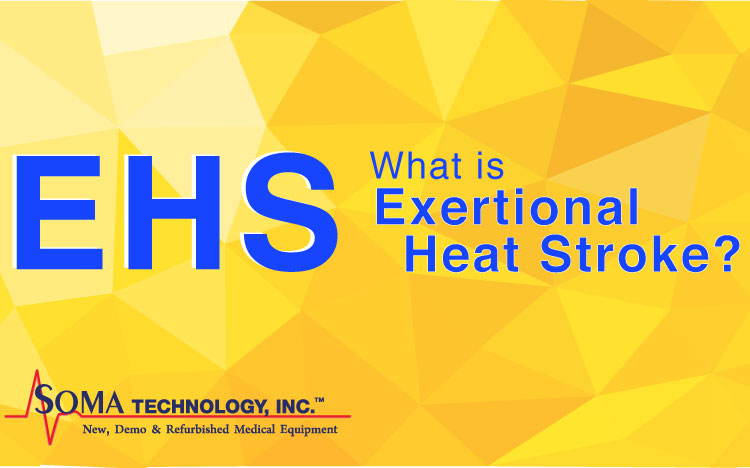EHS – What is Exertional Heat Stroke?
June 27, 2019
EHS – What is Exertional Heat Stroke?
It is officially the summer season and even though this is a perennial occurrence, so is the topic of the difficulties associated with heat stroke. Heat stroke is especially dangerous because it is both severe dehydration and the heating of the body’s core. Click to continue reading more about how to identify heat stroke, how to treat it, and most importantly how to prevent it from happening to yourself and others.
What is EHS?
Exertional Heat Stroke is defined as the rise in degrees of the body’s core temperature. This increase in temperature can have devastation and fatal outcomes. Heatstroke is caused by being in environments with high temperatures for a prolonged period. To reiterate, this is a medical emergency. Damage to internal organs will occur if this is not treated quickly.
The symptoms of heatstroke include a very high body temperature, usually higher than 104 degrees F, sweating, confusion, irritability, vomiting, nausea, headache, and a rapid heart rate. If this person is outside, immediately get them inside into a cool room. You will need to remove any extra clothing and cool them down as fast as possible including cold showers, ice packs, or wet towels.
What to Expect with Medical Care
If someone with heatstroke arrives at a medical facility, the staff is going to act very quickly. They will be focused on lowering your internal temperature. You may be put in a cold water bath, have water misted and then have a fan blowing cold air onto you, or use a cooling blanket. The patient will need to have plenty of fluids to replenish themselves.
How to Prevent EHS?
EHS happens when someone is either doing strenuous activity in the heat or has been in the heat for a long time. It is important to not drink alcohol if you know you are going to be outside because this will make heat stroke more likely to happen. People who are over the age of 65 are more likely to get heatstroke due to the degradation of their nervous system.
Other preventative techniques include wearing loose clothing, staying hydrated, not staying in a parked car, remembering to take children out of parked cars, and not exercising or doing excessive amounts of work in the heat.
Final Thoughts
Have you ever gotten heatstroke? Do you know what to do in a medical emergency for someone who likely has EHS? Did this article teach you something? Check out our tips on how to have safe summer fun. Comment below!
Explore Other Blog Items By Category
Recent Posts


EKG vs ECG | What’s the Difference Between ECG and EKG?

